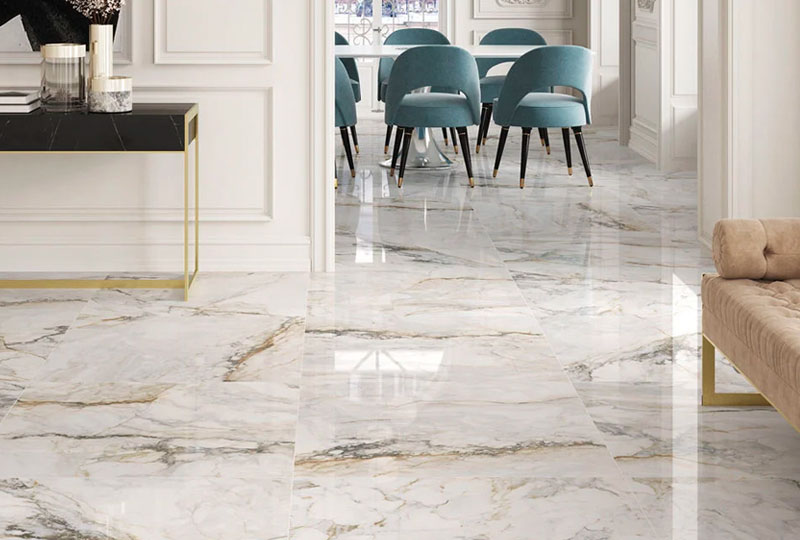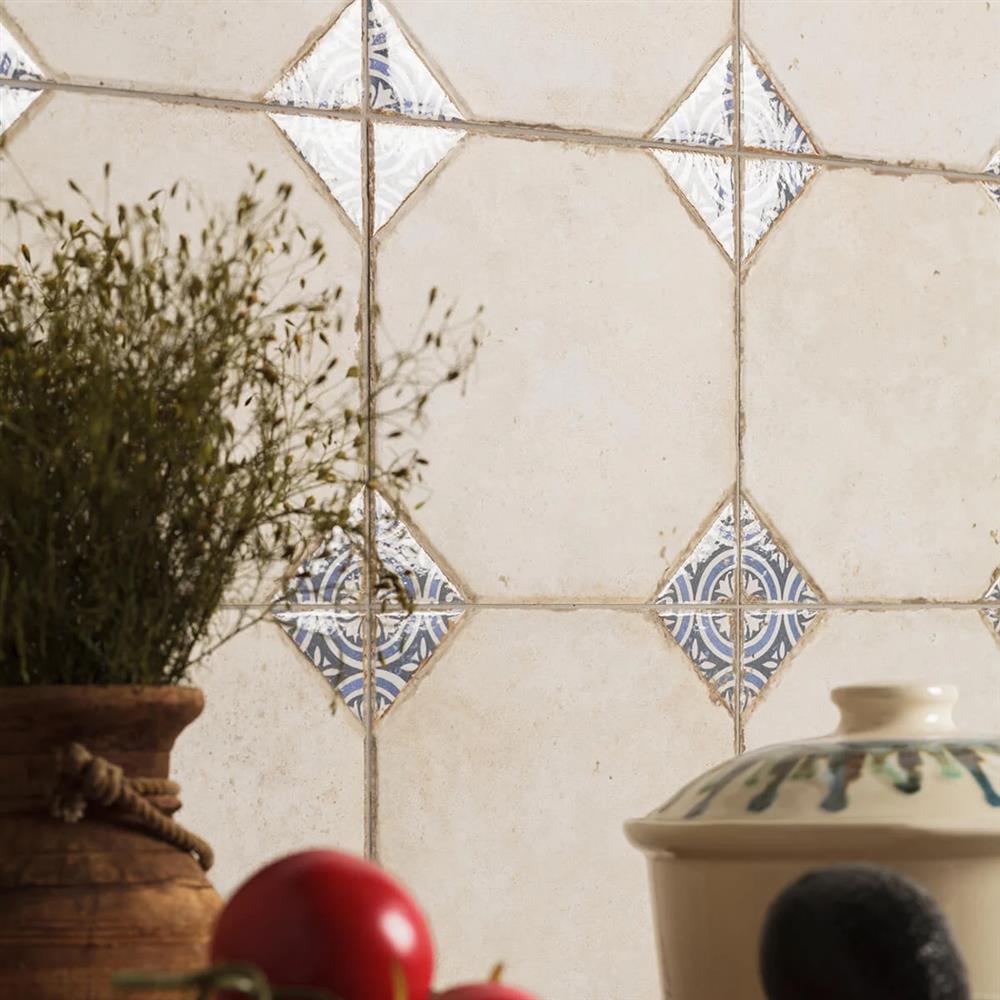When it comes to choosing the right flooring and wall decor for your home, a quality set of porcelain tiles offers a practical and long-lasting surface option. But as any homeowner knows, your new set of tiles will only stay sparkling and shiny so long as you give them the care and attention they deserve.
Fortunately, thanks to their low maintenance qualities, porcelain tiles are much easier to clean than other natural stone tile and ceramic options. However, if you’ve only ever had natural stone tiles in your home, you might not be sure of the best way to clean porcelain tile installations.
So, to help you get your tiles looking as fresh as possible, and keep them clean in the future, here are our top tips for how to clean porcelain tiles, including things to avoid during the cleaning process and advice for how to remove stains from porcelain tiles if they’ve dried.
![]()
(image credit: Tima Miroschnichenko)
What is the best way to clean porcelain tiles?
Similar to cleaning natural stone tiling, which is susceptible to damage from harsh chemical cleaners and abrasive tools, you should be careful when cleaning porcelain tiles in order to maintain their protective seal.
However, this in no way means that porcelain tiles are hard to clean. In fact, in most cases the best way to clean porcelain tiles involves using little more than a mop, a cloth, some warm soapy water, and some elbow grease.
By following the steps we’ve outlined below; you should have your porcelain floors clean in no time:
1. Sweep and vacuum your floor
First things first, while you can leap straight into mopping and wiping your porcelain tiles clean, for the best results, it’s always a good idea to sweep and vacuum your floor and walls beforehand.
Doing this will clear away any dirt and dust that could be spread over your floor when mopping, making it that much harder to remove the dirt when cleaning your porcelain tiles.
2. Mop and wipe your tiles with warm soapy water
Next, with your floor and wall tiles clean of excess dirt, your next cleaning step is to prepare a bucket of warm and soapy water to mop or wipe your floors and walls clean.
In most cases, this will be more than enough to clear away any standard grease and streaks left behind from cooking, cleaning, and washing, though you can also use a specialised tile cleaner for removing persistent stains on your porcelain tiles – provided it’s porcelain tile friendly.
3. Clean the grout lines
With the tiles themselves clean, it’s now time to attend to those mucky grout lines that give your tiles their distinctive outline. Grout lines are notoriously the dirtiest aspect of any tile floor and can quickly accumulate mould and grime if not cleaned and sealed regularly.
So, if you find your grout lines aren’t coming clean with a single mop, take a toothbrush and clean the dirt away by hand. This can be quite time-consuming the first time around, especially if you haven’t been cleaning your porcelain tiles regularly, but once done, you shouldn’t need to give them more than a quick brush in the future.
4. Tackle any stains
Alongside grout dirt, any stains that you fail to tackle immediately when cleaning your porcelain tiles have the potential to stain your tile if their protective seal is old or damaged.
If this is the case, then a more dedicated porcelain tile cleaner may be required to remove them. Again, make sure that you follow the instructions on your chosen product to remove stains on porcelain tiles without damaging them.
5. Rinse your tiles
Once mopped and wiped, it’s always a good idea to make sure any excess soap suds are washed away from your tiles by rinsing your floor and wall tiles with fresh water. Doing this will minimise the risk of streaks being left behind when you dry your floor and make everything feel that much fresher.
6. Dry your tiles with a microfibre cloth
Finally, while you can let your porcelain tiles dry normally, one of the best ways to avoid streaks is to dry them straight after with a microfibre cloth. This will pick up any remaining dirt while simultaneously buffing your floor for that shiny effect.

Calacatta Gold Polished Porcelain
How to remove stains from porcelain tiles
Knowing how to remove stains from porcelain tiles without damaging them is important. However, at the end of the day, it may not be an easy process if such stains are old and engrained in your tile’s surface.
This is because, like natural stone, porcelain tiles are vulnerable to damage from harsh alkali or acidic substances, making traditional cleaning solutions like vinegar and baking soda a potential risk to the integrity of your tile’s sealant.
Instead, we’d recommend giving the stain a thorough clean with warm and soapy water, brushing or wiping in a circular motion, and if that fails, turning to a dedicated porcelain stain remover product – it may cost you more to begin with, but such products are certainly cheaper than replacing a tile outright.
How to remove grout stains from porcelain tiles
Similar to some natural staining, grout staining and haze can be particularly tricky to get rid of, especially once set. For this reason, you should always look to wipe away any excess or spilt grout as soon as possible to avoid it setting.
However, if you do come across dried grout on your tiles, it’s best not to waste time trying to mop it up. Instead, we recommend using a product like LTP Grimex, which is designed to remove impurities from your tiles without damaging them.
How to keep porcelain tiles clean: General tips
Now that we’ve covered some specific cleaning tips, what can you be doing on a regular basis to keep your tiles clean in the future? Here are our top porcelain tile cleaning tips to add to your weekly cleaning routine:
- Dust and mop – although it might feel time-consuming, giving your tiles a quick dust and dry mop with a microfibre brush once a week can help keep on top of any dirt and dust that may accumulate from daily use.
- Catch spills ASAP – when it comes to curbing potential staining and mess, it’s always a good idea to clean up any spills and grime the moment you spot them, reducing the odds of staining occurring down the line.
- Localise your cleaning – should you end up missing any spills initially and find yourself with dry stains left in their place, you should still look to clean them immediately, rather than waiting until you do your weekly clean. This will stop these stains from becoming more permanent, and they’ll likely be easier to clean.
How to keep porcelain tiles clean: What to avoid
When it comes to the best way to clean porcelain tiles and keep them in good condition, there are a few things you want to avoid doing during the cleaning process to avoid damaging them.
For starters, as with any indoor or outdoor tiles, you want to avoid using any cleaning products that are heavily alkali or acidic. While effective at removing stains on porcelain tiles, these products also have the potential to permanently damage your tile’s seal and structural integrity, making it harder to get stains out in the future.
On top of this, any abrasive scrubbers should be avoided for the same reasons, and we’d also recommend avoiding the use of a polishing machine to achieve that sought-after porcelain shine. These polishing machines are designed for use on certain commercial tile types and are not always suitable for the tiles installed in your home.
Are there any differences between how to clean porcelain bathroom tiles and how to clean porcelain kitchen floor tiles?
For those interested in how to clean porcelain bathroom tiles compared to kitchen tiles, and any difference involved in the process, the good news is that (when it comes to cleaning at least), the process is exactly the same.
However, what we will say is that, due to the differing moisture exposure of these rooms, you’ll ideally want to clean your bathroom tiles on a weekly basis to stay on top of dirt, while kitchen tiles can be left for up to two weeks before requiring a general clean. That being said, be sure to clean up any noticeable spills or food splatters as soon as you can.

What are the best products for cleaning floor tiles?
Last, but not least, should your mopping prove insufficient, and you find yourself in need of a dedicated porcelain tile cleaning product to remove porcelain tile stains, then we highly recommend using any and all of the following products from our tile fixing range:
- LTP Grimex Heavy Duty Grime Remover - removes tough dirt, grime, grease and oil from porcelain and natural stone tiles.
- LTP Solvex Intensive Cleaner - a high performance remover that rids silicone, adhesive polymers and epoxy grout residue.
- LTP Porcelain Tile Protector - protects porcelain tile surfaces against staining from cement, grout or organic matter, for indoor and outdoor use.
- LTP MPG Polished Stone & Porcelain Tile Sealer - a protective sealer for natural stone and polished porcelain that protects porous surfaces against dirt and staining.
Find the right porcelain tiles for your home
And that’s it – cleaning porcelain tiles really is that simple! Of course, this is provided you’re regularly cleaning your porcelain tiles instead of letting dirt build-up, and repeating the process may be needed for stubborn dirt.
However, should you not feel confident cleaning your own tiles, then there’s no harm in hiring a professional cleaner instead. Or, if you’re ready to replace your old porcelain tiles with a new set, then you should take a look at the Stone Superstore range.
From traditional porcelain floor tiles and porcelain wall tiles to more exotic natural stone porcelain-effect tiles and even porcelain marble-effect tiles, we’ve something for everyone in our collection. Get in touch to find out more about our tiling range, and don’t forget to explore the rest of our tile maintenance advice guides for more tips on looking after your home interior.

